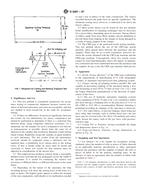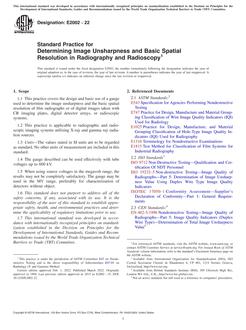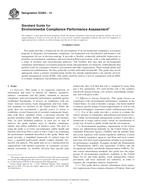1.1 This test method defines equipment specifications and testing procedures for the measurement of constant volume strength and stress-strain characteristics of cohesive soils after one-dimensional consolidation using a constant rate of simple shear deformation mode of loading. The constant volume condition is equivalent to the undrained condition for saturated specimens.
1.2 This test method is written specifically for devices that test rectangular parallelepiped or cylindrical specimens. Other more general devices, such as the torsional shear hollow cylinder, may be used to perform consolidated constant volume simple shear tests but are beyond the scope of this test method.
1.3 This test method is applicable to testing intact, laboratory reconstituted, and compacted soils, however, it does not include specific guidance for reconstituting or compacting test specimens.
1.4 It shall be the responsibility of the agency requesting this test to specify the magnitude of the normal consolidation stress prior to constant volume shear and, when appropriate, the maximum normal consolidation stress, which will result in an overconsolidated specimen.
1.5 All recorded and calculated values shall conform to the guide for significant digits and rounding established in Practice D 6026.
1.5.1 The procedures used to specify how data are collected/recorded and calculated in this test method are regarded as the industry standard. In addition, they are representative of the significant digits that should generally be retained. The procedures used do not consider material variation, purpose for obtaining the data, special purpose studies, or any considerations for the user's objectives; it is common practice to increase or reduce significant digits of reported data to be commensurate with these considerations. It is beyond the scope of this test method to consider significant digits used in analysis methods for engineering design.
1.5.2 Measurements made to more significant digits or better sensitivity than specified in this standard shall not be regarded a nonconformance with this standard.
1.6 The values stated in SI units are to be regarded as the standard. Reporting test results in units other than SI shall be regarded as conformance with this test method.
1.6.1 In the engineering profession it is customary practice to use, interchangeably, units representing both mass and force, unless dynamic calculations (F=Ma) are involved. This implicitly combines two separate systems of units, that is, the absolute system and the gravimetric system. It is scientifically undesirable to combine two separate systems within a single standard. This test method has been written using SI units; however, inch-pound conversions are given in the gravimetric system, where the pound (lbf) represents a unit of force (weight). The use of balances or scales recording pounds of mass (lbm), or the recording of density in lb/ft3 should not be regarded as nonconformance with this test method.
1.7 This standard does not purport to address all of the safety concerns, if any, associated with its use. It is the responsibility of the user of this standard to establish appropriate safety and health practices and determine the applicability of regulatory limitations prior to use.
Product Details
- Published:
- 11/15/2007
- Number of Pages:
- 9
- File Size:
- 1 file , 130 KB
- Redline File Size:
- 2 files , 250 KB


